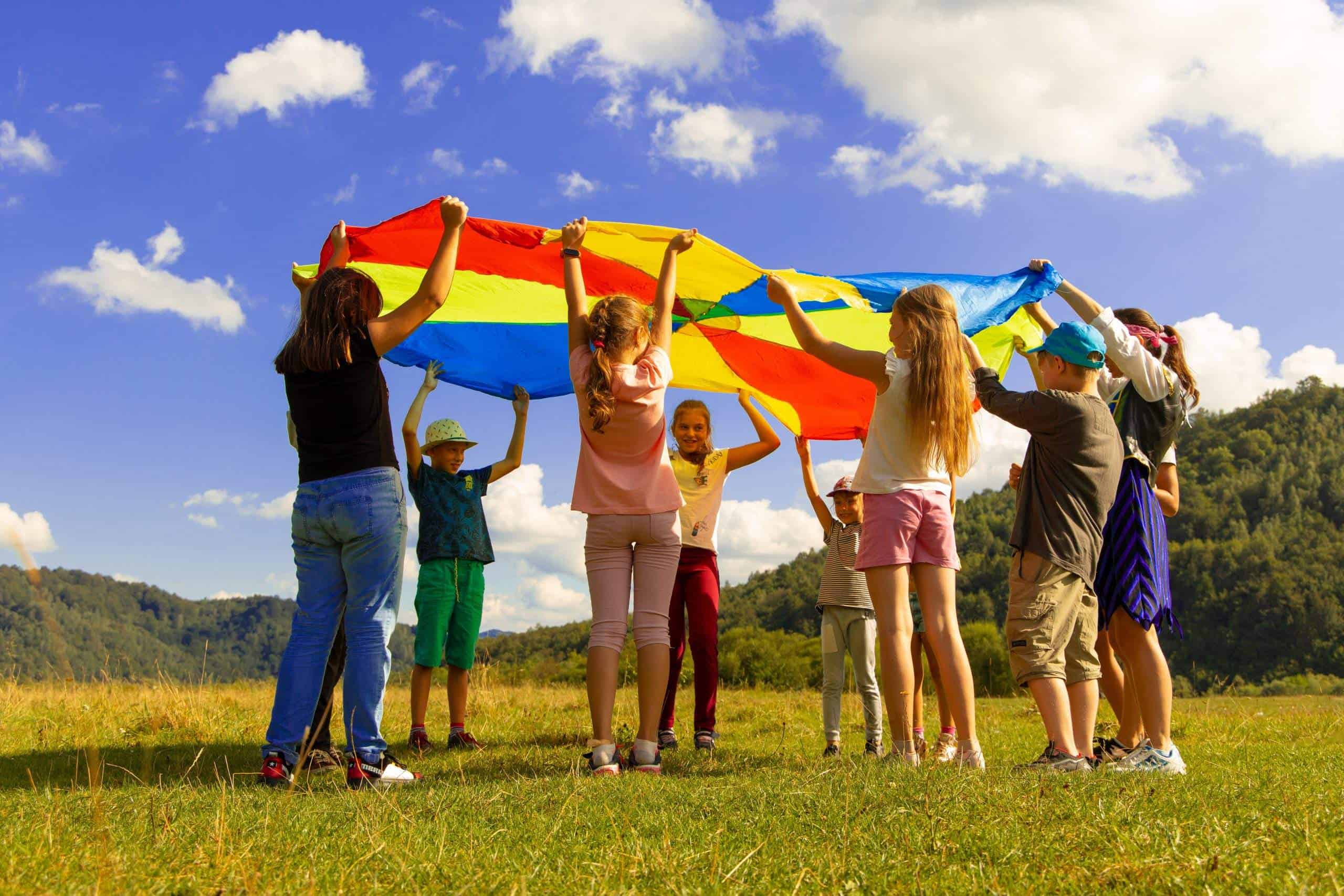
Why do some children and youth spend more time outdoors than others?
Thank you for Dr. Richard Larouche, Assistant Professor of Public Health at the University of Lethbridge, for providing this post.
Outdoor Play Canada was founded shortly after the release of the Position Statement on Active Outdoor Play, which stated that “Access to active play in nature and outdoors-with its risks-is essential for healthy child development. We recommend increasing children’s opportunities for self-directed play outdoors in all settings-at home, at school, in child care, the community and nature” (Tremblay et al., 2015). To guide interventions aiming to increase such opportunities, it is essential to understand what leads to higher or lower time spent outdoors.
This is the question that our recent systematic review (Larouche et al., 2023) sought to answer. With our university librarian, we developed a comprehensive strategy to screen 9 scientific databases to identify previous longitudinal and intervention studies on the determinants of outdoor time in 0- to 17-year-olds. We focused on these types of studies given their ability to shed light on directional associations between exposure to a specific determinant (e.g., a campaign to promote outdoor play) and children and youth’s subsequent time spent outdoors.
We included 55 longitudinal and intervention studies – much more than other recent reviews looking at correlates of outdoor play/time (e.g., Lee et al., 2021). This illustrates that more and more articles about outdoor time are being published. Basically, this field of research is blooming, and this is great news!
Overall, studies included in our review examined 119 potential determinants of outdoor time (or outdoor play). These potential determinants included characteristics of the child (e.g., age, gender), interpersonal factors (e.g., parental behaviours and perceptions), the community (e.g., social cohesion, school-based interventions that promote outdoor play), the built and natural environment (e.g., access to play spaces, weather), and policies (e.g., COVID-19 restrictions). Most potential determinants were assessed in fewer than 3 different studies, which limited our ability to draw conclusions about the consistency of the findings. Nevertheless, our review shines light on some variables that should be taken into account by those who aim to promote outdoor play.
For example, child age was the most frequently examined variable in 20 different studies. The association between age and outdoor time initially appeared inconsistent. However, after dividing the studies by age group (e.g., <5, 5-11, and 12-17 years), we found a clearer pattern: the majority of studies reporting an age-related increase in outdoor time began in early childhood, whereas most studies reporting a decrease began in childhood or adolescence.
Our results emphasize the need to promote outdoor activities among youth who also tend to experience a decline in physical activity (Dumith et al., 2011), engage in large amounts of screen time, and have weaker connections with nature (Michaelson et al., 2021).
Child gender was examined in 11 studies of which 5 found that boys spent more time outdoors than girls, 1 found that older (but not younger) boys spent more time outdoors, and the remainder found no differences. Again, when dividing our findings by age group, a clearer pattern emerged: most of the studies reporting gender differences began in late childhood or adolescence.
Thus, our findings point to a particular need to promote outdoor time among older girls who are also at increased risk of physical inactivity (Dumith et al., 2011).
Unsurprisingly, we found that children spent less time outdoors during the winter season. While weather is not something outdoor play advocates can change, interventions that promote outdoor time across seasons and provide advice on proper winter clothing (e.g., for recent immigrants) are important to support children and youth in getting active all year long.
Interventions that promoted outdoor play using sessions with parents and additional resources (such as community guides or booklets) were generally effective in increasing outdoor time. Yet, their findings need to be taken with a grain of salt because the sample sizes were small, follow-up periods were short, and some of these studies did not include a control group (i.e., a group that did not receive the intervention). Despite these limitations, findings suggest that more comprehensive interventions may be more effective in supporting outdoor time and emphasize a need for larger and longer studies.
Conversely, all three included studies focusing on the impact of COVID-19 restrictions found decreases in outdoor time. Reassuringly, one of these studies found that outdoor time returned to pre-COVID values after restrictions were lifted. Furthermore, 3 studies found that sun safety interventions that discouraged midday outdoor time achieved their objective. Collectively, these findings suggest that well-intended public health interventions may reduce children’s ability to reap the benefits of outdoor play. It seems important to continue to raise awareness about the benefits of outdoor play among public health staff and policymakers.
Richard Larouche is an Associate Professor at the University of Lethbridge and Chair of the graduate Public Health programs. He is a Board member of Outdoor Play Canada. His research focuses on topics related to healthy active living and sustainability.
References
Dumith, S. C., Gigante, D. P., Domingues, M. R., & Kohl III, H. W. (2011). Physical activity change during adolescence: a systematic review and a pooled analysis. International Journal of Epidemiology, 40(3), 685-698.
Larouche, R., Kleinfeld, M., Charles Rodriguez, U., Hatten, C., Hecker, V., Scott, D. R., … & Shimamura, H. (2023). Determinants of Outdoor Time in Children and Youth: A Systematic Review of Longitudinal and Intervention Studies. International Journal of Environmental Research and Public Health, 20(2), 1328.
Lee, E. Y., Bains, A., Hunter, S., Ament, A., Brazo-Sayavera, J., Carson, V., … & Tremblay, M. S. (2021). Systematic review of the correlates of outdoor play and time among children aged 3-12 years. International Journal of Behavioral Nutrition and Physical Activity, 18(1), 1-46.
Michaelson, V., King, N., Janssen, I., Lawal, S., & Pickett, W. (2020). Electronic screen technology use and connection to nature in Canadian adolescents: a mixed methods study. Canadian Journal of Public Health, 111(4), 502-514.
Tremblay, M. S., Gray, C., Babcock, S., Barnes, J., Costas Bradstreet, C., Carr, D., … & Brussoni, M. (2015). Position statement on active outdoor play. International Journal of Environmental Research and Public Health, 12(6), 6475-6505.
Featured image by Artem Kniaz on Unsplash

